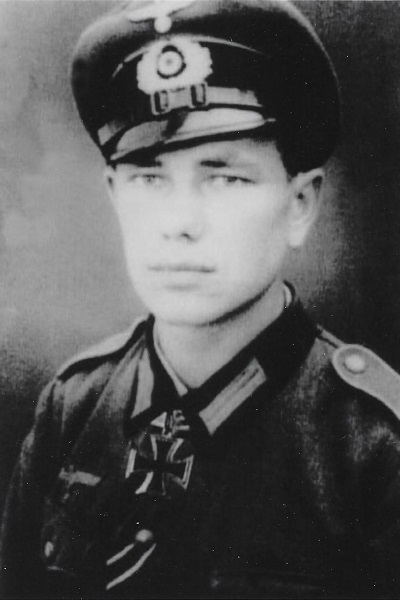Lorfing, Artur
- Date of birth:
- May 23rd, 1922 (Groß Schirrau/East Prussia, Germany)
- Date of death:
- September 12th, 2015 (Bochum/North Rhine-Westphalia, Germany)
- Nationality:
- German (1933-1945, Third Reich)
Biography
Do you have more information about this person? Inform us!
- Period:
- Second World War (1939-1945)
- Awarded on:
- March 22nd, 1943
- Period:
- Second World War (1939-1945)
- Awarded on:
- July 8th, 1944
- Period:
- Second World War (1939-1945)
- Rank:
- Obergefreiter (Corporal)
- Unit:
- 1. Kompanie, I. Bataillon, Grenadier-Regiment 956, 362. Infanterie-Division, Heer
- Awarded on:
- May 9th, 1945
“Obergefreiter Lorfing (of 1./Gren.Rgt. 956) is being recommended for the Knight’s Cross to the Iron Cross.
On the night of the 19./20.10.1944 the enemy broke through the frontline near Carre at a particularly important point with a platoon that was at least 30 men strong. They then proceeded to storm up the Monte dell’ Acqua Salata towards the Kompanie command post (located at the summit of the mountain). A portion of the Englishmen broke off and got around the command post and the artillery observation post without being spotted, and they attempted to clear out both of these from the rear.
At that point in time the control of the hill was of crucial importance for the entire Bataillon sector. If the enemy could eliminate the command post and the artillery observation post then they would be in a position to easily roll up the entire Bataillon sector and expand their penetration even further.
Obergefreiter Lorfing was the first to perceive the great danger, and without hesitating at all he took up the firefight against the enemy. Although he was totally alone he managed to force those enemy forces in the rear to pull back, and through his bold conduct he even brought in a prisoner. He then went to engage the remainder of the hostile force, and he held them in check with his fire.
His audacity here did not only save the command post and artillery observation post from annihilation, but furthermore brought the entire enemy attack to a halt.
Lorfing’s determined actions (despite being alone and in an almost hopeless situation) produced a heroic feat-of-arms that had major implications for the defense of the Bataillon sector. It was his actions alone that averted the great danger, smashed the enemy in the rear and halted the attacking forces to the front. His incredible steadfastness laid the groundwork for the successful counterthrust that followed shortly afterwards.
The decisive and heroic deed by Obergefreiter Lorfing resolved a dangerous situation for the entire Bataillon sector.”
Artur Lorfing's nomination was received by the Heerespersonalamt (HPA—Army Staff Office) as a teleprinter message between 14 and 16-5-1945. Major Joachim Domaschk sent a teleprinter message to the Heeresgruppe C on 16 May asking why Lorfing was being nominated three and a half months after the deed. The response indicated that apparently Lorfing had already been nominated for the first time on 23-3-1945. Major Domaschk then sent a teleprinter message back to the Heeresgruppe C asking why Lorfing had been nominated almost two months after the original nomination. Domaschk never received an answer. The HPA closed down all operations on 16-5-1945. A file card in the registry for approved or rejected nominations was created, but no presentation occurred and would have been unlawful. The presentation date was assigned by Walther-Peer Fellgiebel.
Sources
- Photo 1: Known to STIWOT
- - FELLGIEBEL, W.P., Elite of theThird Reich, Helion & Company Limited, Solihull, 2003.
- BArch RH 7/397





